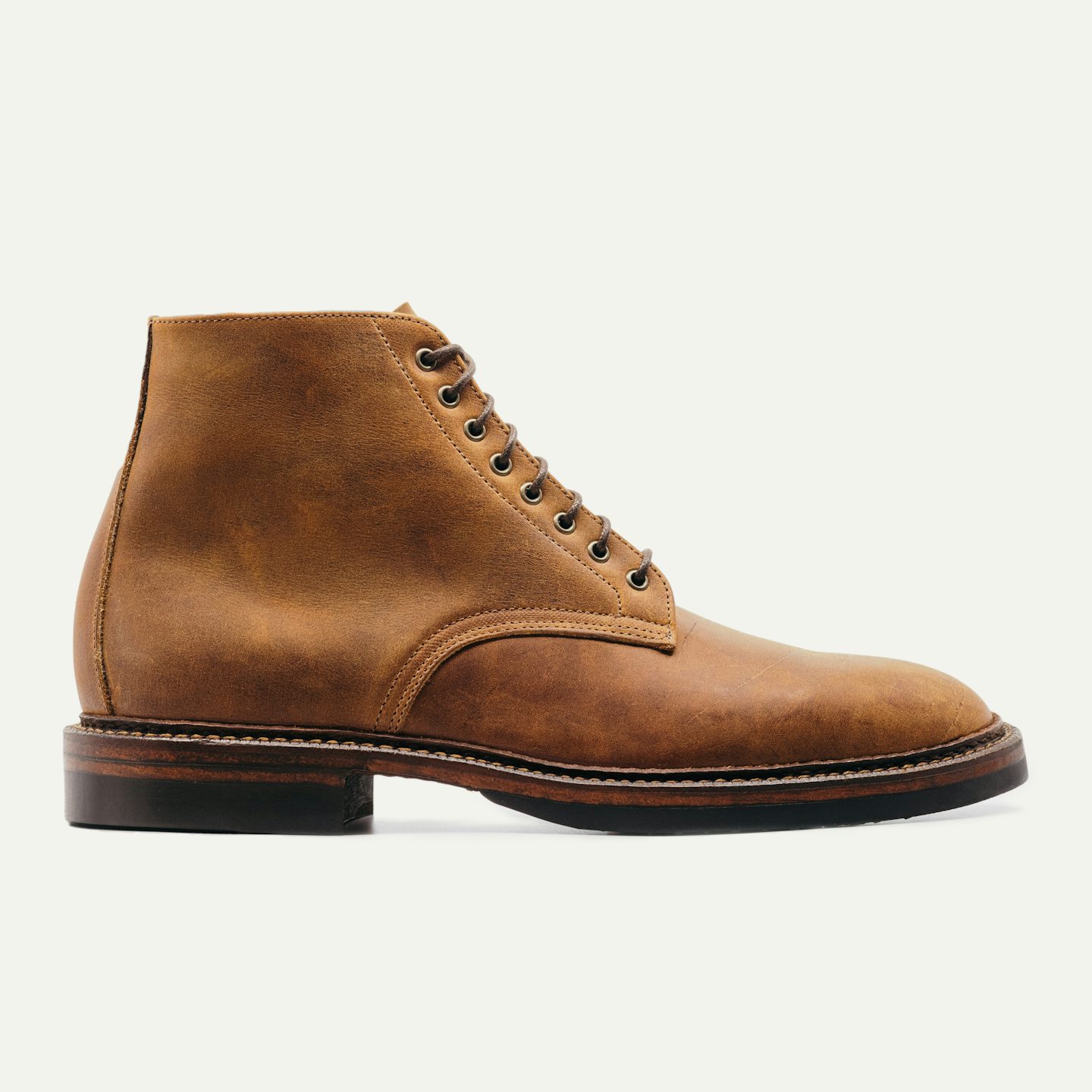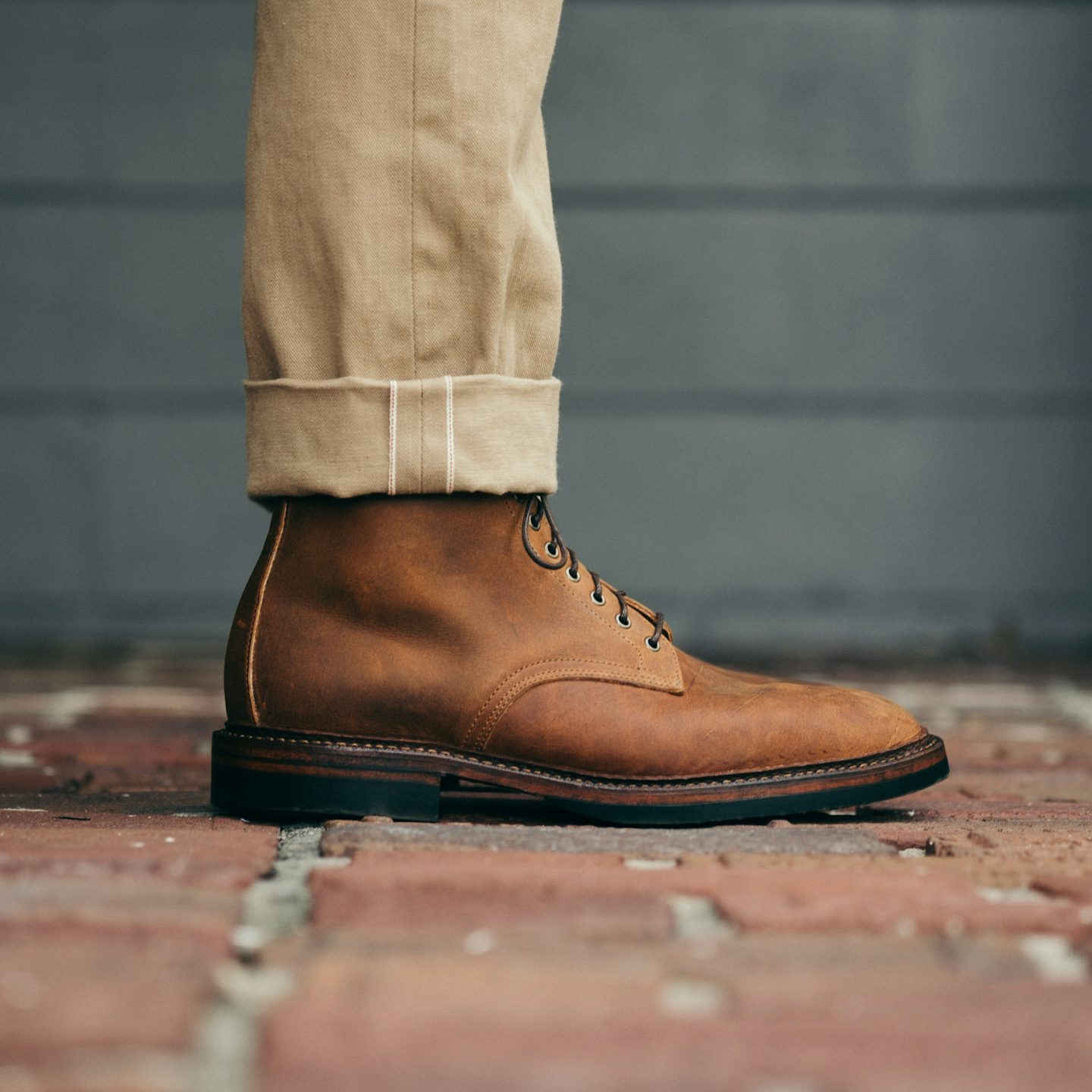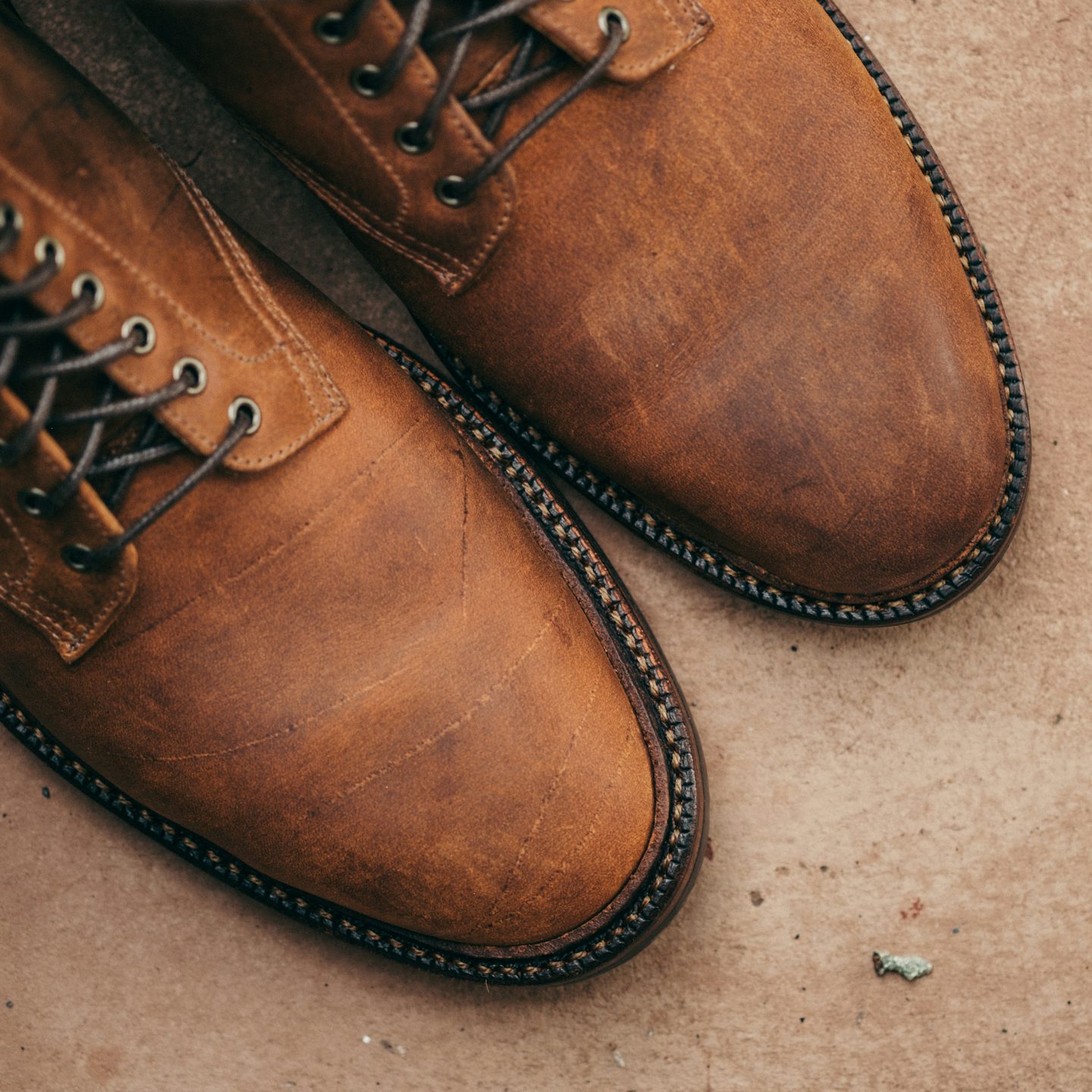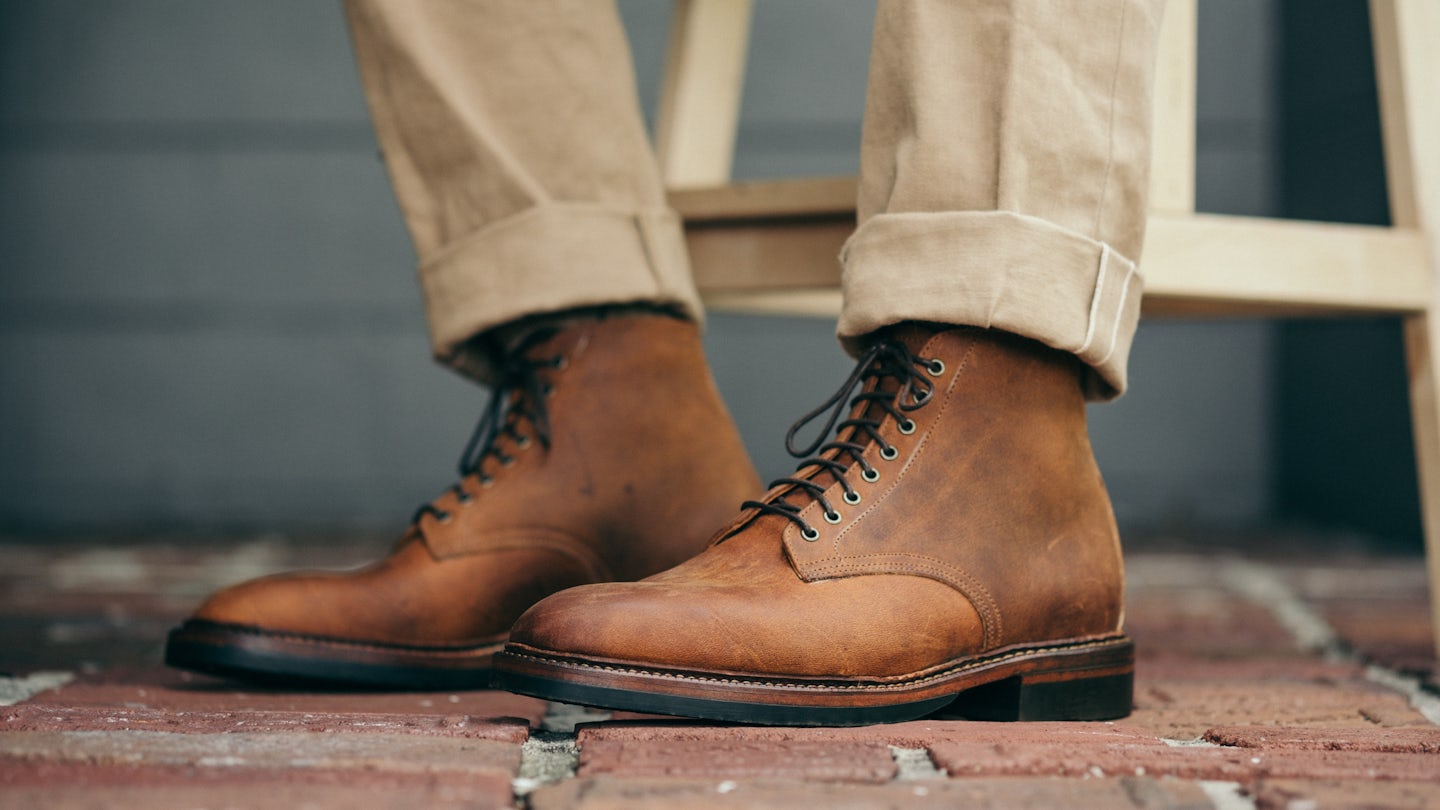Limited Edition, Made in USA
Trail Crazy Horse
Sold Out
Sorry, you missed this one. Sign up and be first to see and shop all-new releases, limited editions, and restocked classics.
Lakeshore Jump Boot
Hand-Lasted Goodyear Welt Construction. Seidel® Trail Crazy Horse Leather. Heavy-Duty Midsole & Structured Toe. Black Vibram® 705 Half Sole with Brass Tacks. Stacked Leather Heel with Deadstock Cat's Paw Twin-Grip Heel. Barbour® Storm Welt with Wheeling Stained and Finished by Hand. Full Calfskin Lining. Tone-On-Tone Stitching. Antique Brass Eyelets. Round Waxed Cotton Laces.
Shop Lakeshore Boot
Lakeshore Last Oak Street Bootmakers Lakeshore Last Technical Drawing The Lakeshore Last exhibits the versatility and character demanded of a professional shoe. Crafted to fit with precision, this last provides durability and distinction from morning commute to evening cocktail.
Shop Lakeshore Last
Vibram® 705 Half Sole with Deadstock Cat's Paw Twin-Grip Heel Vibram 705 Cat's Paw Half Sole Sole Technical Drawing
Vibram's oil-resistant workhorse half sole is fitted atop 14-iron leather and stabilized with a steel shank for durability and comfort without compromise. Each sole is then hand-fitted to a deadstock Cat's Paw Twin-Grip Rubber Heel which has been stored in a climate-controlled warehouse for roughly 50 years.
Vibram® 705 Half Sole with Cat's Paw
Seidel® Trail Crazy Horse Seidel Tannery Logo Trail Crazy Horse is an authentic American-made leather which has a unique tanning process hot stuffed with oils in the drum combined with finishing oils and waxes to create a strong pull-up effect which is milled to provide a distressed, worn-in look. With use, a bruised appearance and worn in surface look will develop.
Shop Trail Crazy Horse
More than Made in USA United States of America Flag We are 100% committed to manufacturing all our footwear and accessories in the United States.
Fully Recraftable Oak Street Bootmakers Recrafting Services Icon All our footwear is 100% recraftable, meaning it can be re-soled again and again.
Fit for Command
Bespoke Officer Boots of World Wars I & II
U.S. Army Field Officer Insignias
In WWI and WWII, American Field Officers (those of Major or greater rank) were required to have one pair of shoes or boots for their dress uniform and another for the field, but they were not required to procure footwear from the Quartermaster. All shoes and boots still had to meet certain standards defined by the uniform code and in accordance with their division. Officers may otherwise indulge their personal preferences, whether it be a fine calf or vachetta leather, a double-leather or half sole, or even a silhouette based on the boots worn by British or French officers. (This explains why dressy “Jump Boots” of our day have little in common with the knee-high boots worn by WWII Paratroopers—they are based on boots worn by their Airborne Division superiors—those who did more jumping out of Jeeps than an airplanes).
Most officers, being the prudent and practical sort, opted for a variation of their standard-issue footwear, but made-to-measure and hand-lasted from a heavy veg tan leather, a premium rubber half sole, and some subtle hand-finished details they could appreciate without making the wrong sort of statement to their men, most of whom would have been lucky to have any well-functioning boots within two sizes of their Brannock measurement.
Our Field Officer Boot and Lakeshore Jump Boot highlight this footnote in shoemaking history, retaining the form and function of boots assured to all who served—and remaining faithful to the hand-crafted charm of boots commissioned by those who most assuredly would refuse to ever compromise.
History of the Jump Boot Solid Footing for Soft Landings Lieutenant General William P. Yarborough developed the 'Paratrooper Boot' in 1941 for the 501st Parachute Test Battalion (now the 501st Infantry Regiment). It would soon find its way throughout the 82nd and 101st Airborne Divisions. It would make its combat debut on D-Day, worn by all 13,100 Paratroopers for their drop into Normandy. The boot featured a structured toe with cap and a rigid outsole, and an upper with additional ankle support—all to help facilitate soft landings. Crafted primarily by the Corcoran Boot Company and issued only to Paratroopers, these boots quickly became a mark of prestige—and given their high-quality, they were authorized to be worn with Paratroopers’ dress uniforms.
A Jump Boot without a Cap Toe?
The 1941 Paratrooper Boot had a toe cap, not for appearance, but for rigidity. Our Lakeshore Jump Boot features a structured toe box, a layer of calfskin lining, and far heavier and tougher leather than the original. This allows us to remain true to the functional requirements of the Jump Boot in a silhouette reminiscent of a traditional war-era service boot.




